#wieboldt's
Photo

7 notes
·
View notes
Text
【大學槍聲】西北大學發生槍擊事件女子開槍後逃逸
(芝加哥時報快訊)西北大學芝加哥校區韋博特廳(Wieboldt Hall)附近11月27日晚發生槍擊事件,導致校園緊急封鎖。芝加哥警方表示,一群人在東芝加哥大道300街區發生打鬥,期間一名女子開槍一次,隨後人群逃散,未知是否有人受傷。
Continue reading Untitled
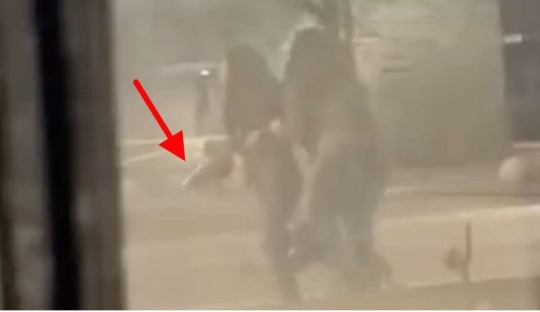
View On WordPress
0 notes
Text
Suspects in custody after ‘shots fired’ outside Northwestern University’s Wieboldt Hall, Chicago & students locked down
Suspects in custody after ‘shots fired’ outside Northwestern University’s Wieboldt Hall, Chicago & students locked down
Read Full Text

View On WordPress
0 notes
Text

Here is an ad of Chicago Black Hawks Goaltender Tony Esposito appearing at some Wieboldt’s Department Stores in the Chicagoland area. From The Chicago Tribune October 8, 1972. He passed away on August 10, 2021.
0 notes
Photo
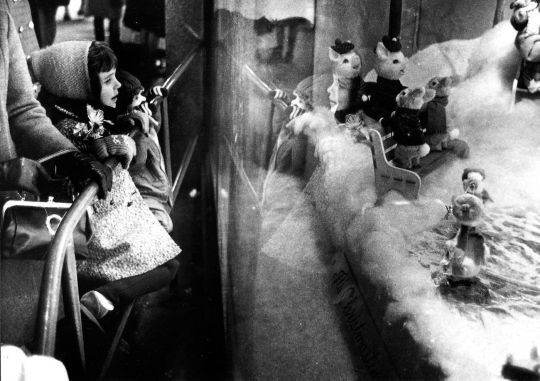
Children view a holiday window at Wieboldt's department store on State Street on Dec. 22, 1969. A railing was placed in front of the window to hold back the crowd. (Dave Nystrom, Chicago Tribune)
#christmas#christmas in chicago#holiday windows#wieboldt's#state street#december#1969#chicago tribune
0 notes
Photo

Wieboldt’s department store, Evanston, Ill. 1954. Arch. Holabird, Root and Burger Ass.
106 notes
·
View notes
Link
MARTY GODDARD’S FIRST FLASH OF INSIGHT CAME IN 1972. It all started when she marched into a shabby townhouse on Halsted Street in Chicago to volunteer at a crisis hotline for teenagers.
Most of the other volunteers were hippies with scraggly manes and love beads. But not Marty Goddard. She tended to wear business clothes: a jacket with a modest skirt, pantyhose, low heels. She hid her eyes behind owlish glasses and kept her blond hair short. Not much makeup; maybe a plum lip. She was 31, divorced, with a mordant sense of humor. Her name was Martha, but everyone called her Marty. She liked hiding behind a man’s name. It was useful.
As a volunteer, Ms. Goddard lent a sympathetic ear to the troubled kids then called “runaway teenagers.” They were pregnant, homeless, suicidal, strung out. She was surprised to discover that many weren’t rebels who’d left home seeking adventure; they were victims who had fled sexual abuse. The phones were ringing with the news that kids didn’t feel safe around their own families. “I was just beside myself when I found the extent of the problem,” she later said.
She began to formulate questions that almost no one was asking back in the early ’70s: Why were so many predators getting away with it? And what would it take to stop them?
Ms. Goddard would go on to lead a campaign to treat sexual assault as a crime that could be investigated, rather than as a feminine delusion. She began a revolution in forensics by envisioning the first standardized rape kit, containing items like swabs and combs to gather evidence, and envelopes to seal it in. The kit is one of the most powerful tools ever invented to bring criminals to justice. And yet, you’ve never heard of Marty Goddard. In many ways she and her invention shared the same fate. They were enormously important and consistently overlooked.
I was infuriated when I read a few years ago about the hundreds of thousands of unexamined rape kits piled up in warehouses around the country. I had the same question that many did: How many rapists were walking free because this evidence had gone ignored?
Take for example, the case of Nathan Ford, who sexually assaulted a woman in 1995. Although a rape kit was submitted to the police, it went untested for 17 years.
During that time, he went on to assault 21 other people, before being convicted in 2006.
And I had another question: How could a tool as potentially powerful as the rape kit have come into existence in the first place? For nearly two decades, I’d been reporting on inventors, breakthroughs and the ways that new technologies can bring about social change. It seemed to me that the rape-kit system was an invention like no other. Can you think of any other technology designed to hold men accountable for brutalizing women?
As soon as I began to investigate the rape kit’s origins, however, I stumbled across a mystery. Most sources credited a Chicago police sergeant, Louis Vitullo, with developing the kit in the 1970s. But a few described the invention as a collaboration between Mr. Vitullo and an activist, Martha Goddard. Where was the truth? As so often happens in stories about rape, I found myself wondering whom to believe.
Mr. Vitullo died in 2006. Ms. Goddard, as far as I could tell, must still be alive — I couldn’t find any obituaries or gravestones that matched her name. An interview in 2003 placed her in Phoenix, and so I collected phone listings for Martha Goddard in Arizona and called them one after another. All those numbers had been disconnected.
Little did I know that I would have to hunt for six months before I finally solved the mystery. I would learn she had transformed the criminal-justice system, though her role has never been fully acknowledged. And I would also discover that Louis Vitullo — far from being the inventor of the rape kit — may have taken credit for Ms. Goddard’s genius and insisted that his name be put on the equipment.
I pieced together dozens of obscure marriage and death notices to try to find her family members; read through hundreds of newspaper articles to establish the timeline of events; and even hired a researcher to dig through an archive of Chicago police department files from the ’70s. Finally, I managed to speak to eight people who knew or worked with her. From these sources, and two oral-history tapes in which she told her life story, I cobbled together what happened.
Back in that Chicago crisis center, Marty Goddard encouraged teenagers to confide in her, and she began to realize just how many of them had been molested.
At the time, most people believed that sexual abuse of children was rare. One psychiatric textbook from the 1970s estimated that incest occurred in only about one in every million families, and claimed that it was often the fault of girls who initiated sex with their fathers. Meantime, it was still legal in every state in America for a husband to rape his wife. Sexual violence that happened within a family was not considered rape at all. A real rape was a “street rape.” It happened to women stupid enough to be in the wrong places at the wrong times.
In Chicago, rape seemed like some sort of natural disaster, no different from the arctic winds that could kill you if you wandered out in the winter without a coat. “Chicago was not a city you wanted to venture out into after dark,” wrote the activist Naomi Weisstein. “Rape was epidemic.” In 1973, an estimated 16,000 people were sexually assaulted in and around Chicago. Only a tenth of those attacks were reported to the police and fewer than a tenth of those cases went to trial; an infinitesimal fraction of perpetrators ended up in prison.
It was a time — much like our own — when millions of people felt that the police had failed them. Chicago was still reeling from the 1969 killing by the cops of Fred Hampton, the chairman of the Illinois Black Panther Party, while he’d been sleeping in his own bed. The Chicago Police Department was notorious as a brutal, occupying force in black neighborhoods. Citizens’ groups were demanding review boards to reform officers’ behavior.
Amid all that, Ms. Goddard began asking questions that might seem so obvious to us today, but were radical in her own time: What if sexual assault could be investigated? What if you could prove it? What if, instead of a “she said” story, you could persuade a jury with scientific evidence?
A lot of men didn’t like her style. But Ray Wieboldt Jr., heir to a Chicago department-store fortune, did, and in 1972 she was hired as an executive at the Wieboldt Foundation, a charitable family fund that rained down money on progressive causes.
The Wieboldt name became her secret weapon. “I could say, ‘I’m Marty Goddard from the Wieboldt Foundation’ and people would just let me in their doors,” she recounted. And so she Wieboldt-ed her way in to meet with hospital managers and victims’ groups and began asking her relentless questions about rape.
Crime labs did not yet have the ability to test DNA; the first use of DNA forensics would not come until 1986, when British investigators used the technology to hunt down a murderer who raped his victims. But they could analyze pieces of glass, fingerprints, splatter patterns, firearms and fibers. Police investigators could find biological clues to help establish the identity of a suspect by, for instance, comparing blood types.
Ms. Goddard wanted to figure out why — even with all this evidence — no one seemed able to prove that a sexual assault had occurred. She learned that victims usually ended up in a hospital after an assault. The cops might dump a shivering, weeping woman in the emergency room and yell out, “We got a rape for you.” As they cared for the victim, the nurses might wash her off or throw away her bloody dress, inadvertently destroying evidence.
The cops didn’t seem to care. Instead, they would isolate the victim in a room and lob questions at her to try to determine whether she was lying. A Chicago police training manual from 1973 declared, “Many rape complaints are not legitimate,” and added, “It is unfortunate that many women will claim they have been raped in order to get revenge against an unfaithful lover or boyfriend with a roving eye.” Officers would routinely ask women what they’d been wearing, whether they’d provoked the attack by acting in a seductive manner, and whether they had enjoyed the sex. “An actual rape victim will generally give the impression of a person who has been dishonored,” according to the manual.
In the early days of forensic science, the 19th century, rape exams sought primarily to test the virtue of women. A doctor would be called in to examine a woman’s vagina and then report on her motives. Was she a trollop, a harlot, or a pure-hearted innocent who spoke the truth?
In 1868, a British publication, Reynolds’s Newspaper, reported on one such exam. The surgeon “gave such evidence as left no doubt that the prosecutrix could not have been so innocent as she had represented herself to be.” The magistrate “said no jury would convict on such evidence, and he should discharge the prisoner.”
In other words, sexual-assault forensics began as a system for men to decide what they felt about the victim — whether she deserved to be considered a “victim” at all. It had little to do with identifying a perpetrator or establishing what had actually happened.
Even in the 1970s, the forensic examination remained a formality, a kind of kabuki theater of scientific justice. The police officers wielded absolute power in the situation; they told the story; they assigned blame. And they didn’t want to give up that power.
Ms. Goddard’s insight was that the only fix for this dysfunctional system would be incontrovertible scientific proof, the same kind used in a robbery or attempted murder. The victim’s story should be supported with evidence from the crime lab to build a case that would convince juries. To get that evidence, she needed a device that would encourage the hospital staff members, the detectives and the lab technicians to collaborate with the victim. On the most basic level, Ms. Goddard realized, she had to find a mechanism that would protect the evidence from a system that was designed to destroy it.
EVEN AFTER MONTHS of searching for Marty Goddard, I hadn’t been able to find her, or even figure out the names of her family members. But I did manage to track down Cynthia Gehrie, an activist who’d been swept up in Ms. Goddard’s crusade.
The two women met at a gathering for anti-rape activists in 1973 and soon they were strategizing over lunches and dinners, notebooks by their plates. At the time, Ms. Gehrie worked a day job at the A.C.L.U.; she was so impressed by Ms. Goddard that she volunteered to be her sidekick as they figured out how to force men in power to reckon with the rape epidemic.
Their timing was excellent, because 1974 was the year that everything flipped in Chicago. Women who had once been ashamed were now speaking out.
In October, a delegation of suburban women gathered before the members of the Illinois General Assembly. One described how she’d tried to fend off a sexual attacker with a fireplace poker. After the assault, she had carefully saved the bent poker and handed this piece of evidence to police detectives. Then, she recounted through tears, the police returned the poker to her straightened out. The idiots thought she had wanted them to fix it.
A mother stood before the committee and said that her little girl had been molested on her way to kindergarten. The police were already familiar with the attacker, a pedophile who had infected at least one child with venereal disease. And yet he was roaming free.
A nurse at the meeting explained how medical staff handled rape cases — and in the middle of her testimony, announced, “I am a rape victim myself.”
A few days later, about 70 women from a group called Chicago Legal Action for Women, CLAW for short, flooded into the office of State’s Attorney Bernard Carey, and plastered the walls with messages like “Wanted: Bernard Carey for Aiding and Abetting Rapists.”
The rape problem had suddenly become Mr. Carey’s problem, and he desperately needed to look as if he had an answer.
A movement was beginning — an awakening, like #MeToo. The fact that many of these activists were well-off white women forced politicians to pay attention. Black women in Chicago's poorest neighborhoods were most at risk of sexual violence, but their stories rarely made it into the newspapers, and rape was all too often portrayed as an affliction of the suburbs. Throughout her career, Ms. Goddard would wrestle with this disparity and try to overcome it. In 1982 she told an Illinois state legislative committee that “the lack of services on the South and West Sides of Chicago where a majority of our black victims reside” was “totally disgraceful.”
Now, though, in the early 1970s, she had just one obsession. She was determined to convince Bernard Carey that the problem could be solved, if he only had the will to do it. One day she showed up unannounced at his office and to her surprise, he welcomed her in. “I don’t know what the answer is,” he told her. But he had a new plan: He was going to let women like Ms. Goddard help figure out the rape problem for themselves. He appointed her and Ms. Gehrie to a citizens’ advisory panel on rape. Their mission: to investigate the failures in policing and suggest sweeping reforms.
Marty Goddard finally had what she wanted: permission to get inside the police departments.
With her new investigative powers, she headed to the Chicago crime lab building to ask police officers what was going wrong. Years later, she described what she had learned there in the oral history tapes. The cops blamed hospital workers, saying: “We don’t get hair. We don’t get fingernail scrapings.” The slides weren’t labeled, and they’d been “rubber-banded” together so that they contaminated one another. “So there goes that. It’s worthless,” the detectives told her.
The problem, she realized, was that no one had bothered to tell the nurses and doctors how to collect evidence properly.
What if hospitals could be stocked with easy-to-use forensic tools that would encourage medics, detectives and lab technicians to collaborate instead of pointing fingers? Gradually, these concepts solidified into an object: a kit stocked with swabs, vials and instructions.
Somewhere along the way, Ms. Goddard had befriended Rudy Nimocks, an African-American police officer who had handled incest cases and been horrified by what he’d seen. Ms. Goddard and Ms. Gehrie described Mr. Nimocks as a mentor. (He would be in his 90s now; I made multiple attempts to reach him without success.) According to several sources, Mr. Nimocks warned Ms. Goddard to proceed carefully. He told her that she should take care not to challenge the men in the crime lab directly. And he said that she’d need Sgt. Louis Vitullo, the head of the microscope unit, on her side.
Sergeant Vitullo was a scruffy cop-scientist, with a lab coat pulled hastily over his rumpled shirt and the pale, haunted look of a man who spent hours peering at murder weapons.
One day, Ms. Goddard found Sergeant Vitullo at his desk, introduced herself, and presented him with a written description of the rape-kit system. She must have been blindsided by what happened next.
“He screamed at her,” according to Ms. Gehrie. “He told her she had no business getting involved with this and that what she was talking about was crazy. She was wasting his time. He didn’t want to hear about this anymore.” Ms. Gerhie said Ms. Goddard called her minutes later to vent about being thrown out of Sergeant Vitullo’s office.
“Well, that didn’t go so well!” Ms. Goddard said wryly.
As far as Ms. Goddard knew at that moment, the rape-kit idea had just been killed off.
INVENTION, ARCHITECTURE, DESIGN — these are not just technical feats. They are political acts. The inventor offers us a magical new ability that can be wonderful or terrifying: to halt disease, to map the ocean floor, to replace a human worker with a machine, or to kill enemies more efficiently. And those magical abilities create winners and losers. The Harvard professor Sheila Jasanoff has observed that technology “rules us much as laws do.”
When it comes to sexual assault, there are many inventions I can think of that help men get away with it — from the date-rape drug to “stalkerware” software. More striking is how few inventions, how little technology and design, has been devoted to keeping women safe.
Think about our public spaces, and how much they reinforce the power of men. If you grew up as a girl, you were taught to map out potential sexual attacks when you walked through any city. A hidden doorway, an empty subway platform, a pedestrian bridge with high walls — such places pulse with threat.
In my high-school driving class, the instructor lectured us about the dangers that lurked in empty parking lots. “Ladies, you don’t want to be fumbling in your purse if someone jumps out of the bushes,” he said, and suggested that we hold the car keys in one hand as we hurried to the car. Even as a teenager, I remember thinking how crazy this sounded. If there were rapists lurking everywhere, couldn’t the grownups do something about that?
I learned that the streets did not belong to me. Nor did the stairwells or the empty laundry rooms at midnight. I still remember the sense of defeat my first week as a college student on a pastoral Connecticut campus in the 1980s. I’d been aching to explore its tantalizing forests and hidden ponds. But then the freshman girls were herded into a lecture hall, and the head of public safety told us that if we wanted to walk from one building to another at night, we should first call the escort service that squired females around and protected them from rape.
“No way!” I thought.
And yet, at that time I was struggling to understand — and forgive myself for — having been molested as a small child. And though I never did use the campus escort service, I also never felt that the campus was mine.
But this is not how it has to be. It’s entirely possible to create public spaces and tools for everyone. Our environment and technology can foster a sense of equality and pluralism.
At the same time that Marty Goddard was trying to reinvent forensic technology, the disabled community was radically transforming the design of cities by pushing to make streets and buildings wheelchair-accessible. A wheelchair ramp does more than just allow someone to roll into a building; it also sends out a message that the people in those wheelchairs are important and worthy of dignity. This is the power of invention.
You can see why the idea of a rape kit might have been offensive to Sergeant Vitullo and other police officers. Like many of the great technological ideas, this one blasted through the assumptions of the day: that nurses were too stupid to collect forensic evidence; that women who “cried rape” were usually lying; and that evidence didn’t really matter when it came to rape, because rape was impossible to prove.
Now here was this proposal for a cardboard box packed with tools that would allow anyone to perform police work.
Despite his original reaction, Sergeant Vitullo mulled over Ms. Goddard’s idea. He must have found it intriguing. He studied the plans she’d shown him. And he began to see the sense in it all.
One day, Ms. Gehrie told me, Sergeant Vitullo called up Ms. Goddard and said, “I’ve got something to show you.” When Ms. Goddard arrived in his office, Ms. Gehrie recalled, “he handed her a full model of the kit with all the items enclosed.” Sergeant Vitullo had assembled a prototype for the rape kit and added a few flourishes of his own. And now, apparently, he regarded himself as its inventor.
Another friend of Ms. Goddard’s confirmed this story. Mary Sladek Dreiser, who met Ms. Goddard in 1980, told me that Ms. Goddard always praised Sergeant Vitullo in public. But in private, she described him as a petty tyrant who would “only go along with the kit if it were named after him.”
The rape-kit idea was presented to the public as
a collaboration between the state attorney’s office and the police department, with men running both sides...
..and little credit given to the women who had pushed
for reform. Ms. Goddard agreed to this, Ms. Gehrie said, because she saw that it was the only way to make the rape kit happen
In the mid-1970s, while still at the Wieboldt Foundation, Ms. Goddard began working nights and weekends to found a nonprofit group called the Citizens Committee for Victim Assistance. The group filed a trademark for the Vitullo Evidence Collection Kit in 1978, ensuring that her creation would be branded with a man’s name. For years afterward, the newspapers called the rape kit the “Vitullo kit.” When he died in 2006, an obituary headline celebrated him as the “Man Who Invented the Rape Kit.” His wife, Betty, quoted in the obituary, said that her husband was “proud” of the rape kit “but he didn’t get any royalties for it.” The obituary hailed Mr. Vitullo as a pioneer in a new form of evidence collection that transformed the criminal-justice system. There was no mention of Ms. Goddard.
Even if her name wasn’t on it, Ms. Goddard finally had permission to start a citywide rape-kit system. What she didn’t have was any money to create the kits, distribute them, or train nurses to use them. She had to raise all those funds through her nonprofit group, which represented survivors of sex crimes.
This seems strange. After all, state governments covered the cost of running homicide evidence through the crime lab, so why should sexual assault be any different?
And yet it was. And it still is.
Money problems have always haunted the rape-kit system. Testing a rape kit is expensive; today it costs $1,000 to $1,500. Except in the highest-profile cases, police departments have often pleaded underfunding, and let the kits pile up. That’s why victims themselves have had to bankroll crime labs. In the past decade, groups like the Joyful Heart Foundation have helped raise millions of dollars to test rape kits. The money sometimes comes from bake sales, Etsy crafts and feminist comedy nights.
Fundraising was even harder in the 1970s, however, when most foundations wouldn’t give money to a project with “rape” or “sex” in its title. And so Ms. Goddard had to resort to finding money wherever she could. This is where Hugh Hefner enters the story.
Chicago was built on soft-core porn, and Mr. Hefner was one of the city’s most prominent moguls. Men in suits sidled into his clubhouses for three-martini lunches, celebrities swanned into his mansion for glittering fund-raisers, and a blazing “Playboy” sign scalded the downtown skyline.
Mr. Hefner regarded the women’s liberation movement as a sister cause to his own effort to free men from shame and guilt. And so his philanthropic Playboy Foundation showered money on feminist causes. In the early 1970s, for example, the Playboy fortune provided the seed money for the A.C.L.U. Women’s Rights Project, which was co-founded by a little-known lawyer named Ruth Bader Ginsburg.
In the mid-1970s, Ms. Goddard applied to Playboy for a $10,000 grant (the equivalent of about $50,000 today) to start a rape-kit system. And she got it.
Her collaboration with the Playboy Foundation turned out to be a surprisingly ideal one, in large part because Ms. Goddard had a friend on the inside: Margaret Pokorny (then known as Margaret Standish). Ms. Pokorny brainstormed all kinds of ways to support the project that went beyond the big check. For instance, she recruited Playboy’s graphics designers to create the packaging for the kit. And when Ms. Goddard needed volunteers to assemble the kits, Ms. Pokorny came up with a creative solution: old ladies.
“I’ve got this great idea, Marty,” Ms. Goddard recalled Ms. Pokorny saying. “Everybody just loves the Playboy bunny and these older women, they want something to do.” So one day a horde of them showed up in the Playboy offices, swilling free coffee as they assembled sexual-assault evidence kits.
In 1978, Marty Goddard delivered the first standardized rape kit to around 25 hospitals in the Chicago area for use in a pilot program she had designed — “the first program of its type in the nation,” according to a newspaper article.
The kits cost $2.50 each and contained test tubes, slides and packaging materials to protect the specimens from mixing; a comb for collecting hair and fiber; sterile nail clippers; and a bag for the victim’s clothing. There was a card for the victim, giving her information about where to seek counseling and further medical services.
The New York Times, which described the initiative as a collaboration between Mr. Vitullo and Ms. Goddard, said that the “innocuous looking” box “could be a powerful new weapon in the conviction of rapists.” The Times noted that one of the most important features of the system was deceptively low-tech: “Forms for the doctor and the police officers involved are included, as are sealing tape and a pencil for writing on the slides. Anyone who handles the box must put his or her signature on printed spaces on the kit’s cover.” There would be a paper trail that showed how the evidence had traveled from the victim’s body to the crime lab.
By the end of 1979, nearly 3,000 kits had been turned over to crime labs. One of them had been submitted by a bus driver who’d been abducted and raped by 28-year-old William Johnson. He was sentenced to 60 years in prison, and the Vitullo Evidence Kit was credited with winning the day in court.
By now, Ms. Goddard’s friend Rudy Nimocks had been promoted to head the sex homicide department. He told The Chicago Tribune that the new system had improved evidence collection. But perhaps more important, the kit worked magic in the courtroom. “In addition to the kits being very practical,” he said, “we find that it impresses the jurors when you have a uniform set of criteria in the collection of evidence.”
In other words, the rape kit, with its official blue-and-white packaging and its stamps and seals, functioned as a theatrical prop as well as a scientific tool. The woman in the witness box, weeping as she recounted how her husband tried to kill her, could sound to a judge and jury like a greedy little opportunist. But then a crime-lab technician would take the stand and show them the ripped dress, the semen stains, the blood. When a scientist in a lab coat affirmed the story, it seemed true.
Ms. Goddard had invented not just the kit, but a new way of thinking about prosecuting rape. Now, when a victim testified, she no longer did so alone. Doctors, nurses and forensic scientists backed up her version of the events — and the kit itself became a character in the trials. It, too, became a witness.
That’s another reason Ms. Goddard may have been willing to trademark her idea under Sergeant Vitullo’s name. It was as if in order to invent, she also had to disappear. The rape kit simply never would have had traction if a woman with no scientific credentials had been known as its sole inventor. It had to come from a man.
The word “technology” is part of the problem. It’s a synonym for “stuff that men do.” As the historian Autumn Stanley pointed out, a revised history of technology taking into account women’s contributions would include all sorts of “unimportant” inventions like baby cribs, menstrual pads and food preservation techniques. Sometimes the only way that women could navigate this world was to let a white man in a lab coat become the face of their radical ideas, while they themselves shrank into the background.
During World War II, for instance, a team of six “girls” figured out how to operate the world’s first all-purpose electronic digital computer, called the ENIAC. In 1946, one of them, Betty Holberton, stayed up half the night to ensure that the computer would ace its debut in front of the newspaper cameras. And yet she and the others were treated like switchboard operators, mere helpers to the male engineers. Ms. Holberton went on to invent and design many of the essential tools of computing during the 1950s and ’60s almost invisibly, while her male colleagues were celebrated as geniuses of the age.
Ms. Goddard, certainly, had mastered the art of vanishing. Her friends and collaborators from the 1970s had lost touch with her, and were just as flummoxed by her disappearance as I was. But they remembered her in vivid, disconnected flashes. I often felt that I was spying on her through keyholes into other people’s minds.
“She made miniature rooms,” Margaret Pokorny said, describing how Ms. Goddard spent hours with tweezers and tiny brushes constructing fairy-tale interiors inside of boxes. The rooms were scattered all around Ms. Goddard’s apartment, as if a dollhouse had been dissected.
From Cynthia Gehrie, I learned why Ms. Goddard might have been so driven to escape into Lilliputian fantasies. Ms. Gehrie told me that in the late 1970s, her friend had flown to a resort in Hawaii for a vacation and returned to Chicago a different, and broken, person. “I was raped,” Ms. Goddard had told Ms. Gehrie, pouring out a harrowing account of how a man had abducted her.
“He drove her to a remote location,” Ms. Gehrie said. “He taunted her with the knife. She told him she would do whatever he wanted. Finally, he drove her back to the resort. She was astonished when he let her go.” Ms. Gehrie can’t remember whether Ms. Goddard reported the rape to the police, but she’s always wondered if her friend’s prominence as a victims-rights advocate had made her a target. The attacker had won her trust, Ms. Goddard said, by pretending to be a supporter of her cause.
In one obscure interview I found, Ms. Goddard herself mentioned that rape and the scars it left on her body. And, she said, the attacker had infected her with herpes.
I was heartbroken for her, and more determined to find her than ever. By now she had become “Marty” to me — I could think of her only as a friend. I surmised, from the string of addresses she’d left behind, that she had been spiraling into poverty. She would have been 79. Was anyone caring for her? I felt less and less like a journalist chasing down a story. What I really wanted was to save Marty Goddard before it was too late.
Through the 1980s, Ms. Goddard kept fighting for the rape-kit system despite her growing exhaustion. It was “one incident by one incident by one incident,” she said later. “Imagine how many years it took us to go from state’s attorney to state’s attorney to cop to detective to deputy to doctor to pediatrician to nurse to nurse practitioner” and train each person who interacted with the victim and the rape kit. “I felt I had to save the world, and I was going to start with Chicago and move to Cook County and move to the rest of the state. And there was something in the back of my mind that said, ‘Gee, maybe the circumstances will be such that at some time I can go beyond the borders of Illinois.’”
She was right. In 1982, New York City adopted Ms. Goddard’s system because “its effectiveness was demonstrated in Chicago,” according to The New York Times. Within a few years, the city had amassed thousands of sealed kits containing evidence, and the system was putting rapists in prison.
Ms. Goddard had envisioned a kind of internet of forensics at a time when the internet itself was in its infancy. The idea was to standardize practices in crime labs everywhere and encourage police departments to share data to catch perpetrators who might cross county and state lines. And she had personal reasons for grinding away at the problem, for making it her obsessive mission. The man who had brutalized her in Hawaii still walked free. She knew this because she’d seen him, she told a friend at the time.
She had been walking to the attorney general’s office in downtown Chicago when her attacker materialized out of the crowd and locked eyes with her. It must have been a waking nightmare. Had he been stalking her? Had it been a chance encounter?
I don’t know. She was under an extraordinary amount of stress; maybe she was mistaken. I am working from fragments — from bits and pieces of her friends’ memories. What I do know is that Ms. Goddard began to drink; that she depended now on cheap sherry to dull the pain. She was dragging herself from city to city, evangelizing for the rape kit, sleeping in dive motels, giving everything she had until there was nothing left.
In 1984, the F.B.I. held a conference at its training center in Quantico, Va. Expert criminologists flew in to discuss a new system that would detect the serial killers and rapists operating across state lines. But to the dismay of Ms. Goddard, who attended the conference, the country’s top lawmen demonstrated little empathy for victims.
“So, this one man gets up,” a professor known as an expert in sex crimes, Ms. Goddard remembered later. The professor flashed slides on the screen, a twisted parade of naked female corpses. He made little effort to protect the identities of the dead women. Ms. Goddard was horrified at the way he “couldn’t wait to show the bite marks on the breasts” of one victim, as if to share his titillation with the audience.
That kind of attitude might have gone unremarked at a police convention, but there were lawyers, victims’ advocates and nurses at this conference and they “didn’t appreciate it.” Just as dismaying, this so-called expert described “interrogating” women who’d been raped, as if they were the criminals.
“I went nuts,” Ms. Goddard said. She gripped the arms of her chair, “saying to myself: ‘Calm down. Don’t say anything.’”
AFTER THE PRESENTATION, Ms. Goddard approached one of the organizers and said, “Something’s wrong here, and I really object.” Working on the fly, Ms. Goddard gave a presentation about her pilot project in Chicago, explaining how the rape-kit system worked. Afterward, “two guys from the Department of Justice” approached her and asked her to replicate her program all around the country. She was finally given enough funding to travel to more than a dozen different states and help start up pilot programs.
“I don’t know how my cat survived,” she said of those years. “I was gone all the time.”
She was tired out. And “so many people were downright insulting.” They’d ask her why she was an authority on forensics: “Are you a cop? An attorney?” Ms. Goddard was drinking heavily. She began to step away from her prominent role in criminal justice. She moved to Texas, and then Arizona. And finally she faded from public view so thoroughly that I believe she must have decided to disappear.
Her friend and former colleague Mary Dreiser kept in touch. But one day in about 2006 or 2007, Ms. Dreiser was distressed to dial Ms. Goddard’s number and discover it had been disconnected. Ms. Dreiser’s husband, a lawyer, asked a detective to find Ms. Goddard. She turned up in a mobile-home park in Arizona. “She was happy I had tracked her down,” Ms. Dreiser said.
By the time I started searching for Ms. Goddard a decade later, she had moved out of that trailer and her most recent listing suggested she lived in a dumpy apartment building alongside a Phoenix highway. That phone, too, had been disconnected, so I’d assumed that she had moved on once again, perhaps to a nursing home. But just in case, I called up the building’s management office and asked if the people there could tell me anything about Marty Goddard.
“Unfortunately, I can’t,” said the woman who answered the phone. There were rules about protecting the privacy of residents.
But rules are meant to be broken. So I called back. “Listen,” I said, “just hear me out.”
I then plied the woman in the management office with a brief — and, I hoped, heart-melting — tribute to Ms. Goddard’s genius and her sacrifices.
It worked. “OK,” she said, “let me check into it.” Hours later, she called me back. Marty Goddard had indeed lived in their apartment building, she said, then paused.
“And I’m very sorry to tell you that she passed away.”
The news walloped me. Ms. Goddard had died in 2015, at the age of 74, but there had been no obituary. No announcement. I’d searched for pictures of headstones, remembrances, funeral announcements, and I’d found nothing. This woman who had done so much for the rest of us. How could this be?
Paradoxically, at the same time as Ms. Goddard was fading from sight, her name no longer in the papers, the advent of DNA forensics was giving the rape kit a new kind of superpower.
In 1988, a court ordered Victor Lopez, a 42-year-old repeat felon accused of violent attacks, to submit to a blood draw. He would be the first defendant in New York State to be linked to a crime through DNA analysis — and the case would prove the dazzling effectiveness of this new tool. The DNA test showed a strong match between Mr. Lopez’s blood and the semen collected from one of his victims. Mr. Lopez was convicted of three sexual assaults and sentenced to 100 years in prison. One juror, John Bischoff, told The New York Times that “the DNA was kind of a sealer on the thing. You can’t really argue with science.”
When Ms. Goddard began her work, crime labs could establish only a fuzzy connection between a suspect’s blood and the swabs inside the kit — for instance, by showing that the blood type was a match. But now, DNA markers could reveal the path of a perpetrator as he left his semen or blood at multiple crime scenes.
Starting in 2003, several women across the country
accused a man named Nathan Loebe of sexual assault, but
those accusations had never stuck.
After the Tucson police received a grant to test a
backlog of rape kits, they discovered that DNA from several of the kits matched Mr. Loebe. Rape-kit evidence revealed the
pattern of his attacks, and last year he was sentenced to 274 years in prison, including for 12 counts of sexual assault.
But DNA testing was expensive. Compounding that problem was the sheer success of the rape kit system: Victims now felt encouraged to report their assaults and submit to exams, which meant that police departments were flooded with evidence.
And so, just as the rape-kit system began to succeed, police departments strangled it. They began hiding away thousands of untested rape kits deemed too expensive to process.
New York was among the first cities to set up a rape-kit system, and almost immediately it fell behind in processing. It amassed a huge backlog — 16,000 untested kits by the year 2000. The women (and some men) who submitted to rubber-gloved exams did so because they hoped against hope that the police might actually catch a perpetrator. Little did they know that their evidence could be thrown in a warehouse — or even in a trash can.
In 2000, Paul Ferrara, the director of Virginia’s crime lab, said that backlogs were growing all around the country and “cost lives.” The year before, the Virginia Beach police had had to release a rape suspect because potentially incriminating DNA couldn’t be processed quickly enough, and the suspect went on to murder a woman.
It is striking how much Ms. Goddard’s trajectory mirrored that of her invention. In the early 1990s, just when she might have risen to national prominence, she drifted south. She retired, though she was only in her early 50s, and eked out a living with some help from friends. By the 2000s, she had sobered up and spent her days clipping newspapers, tracking the issues that she most cared about. And then — this part hurts my heart — she pursued a degree in forensics at a local community college.
Ms. Goddard had founded sexual-assault forensics, and yet she now lacked any of the bona fides required to be recognized as an expert. Nothing came of her studies, and she never really worked again. Ms. Goddard herself had been warehoused.
I know all of this because just a few months ago, I finally cracked the case of why and how she disappeared, thanks to some clues I found in the announcement of her brief 1966 marriage in a Michigan newspaper. Working through a chain of obituaries and phone records and small newspaper items, I tracked down a number for Scott Goddard, who I thought must be Marty Goddard’s nephew.
One day I cold-called him and left a message. It turned out that he was the right Scott Goddard. His father had died in a freak accident in 1980, and after that, his aunt became like a second mother to him. “When I was 9 or 10 years old, she took me to the Grand Canyon. And I remained close with her for her entire life,” Mr. Goddard said.
He told me that his aunt — who’d always been so busy, so engaged — had turned into a hermit in the 2000s. She withdrew into her trailer in the mobile-home park, with her newspaper clippings fluttering everywhere, surrounded by the miniature model rooms she still loved to build. She was vanishing, shrinking down to nothing.
“When she passed, I inherited about 50 boxes of stuff,” he said, including a tiny toy chest filled with dolls for the doll children to play with.
He told me that when he was a boy, his aunt had taken him through the Thorne Miniature Rooms at the Art Institute of Chicago — a place she visited many times. Here they had lost themselves in those perfect shadow boxes, peering into, say, a Georgian dining room with crystal wine glasses, like fragments of diamonds, arranged on a silver tray. Beyond the chandelier and the French windows, a painted garden beckoned, with a lily pond and trees wilting in the summer heat, and paths you could follow into even stranger dreamscapes. You could imagine opening up one of the postage-stamp-sized books to hear the crack of its gold-leaf spine and read the secrets contained in its mouse-print text.
I can’t tell you what drove Marty Goddard into her dioramas. People around her tended to believe she wanted to escape into her imagination. But I think maybe she was exploring the dark magic of ordinary things, the way the most forgettable object can be converted into evidence. Some underwear, a pack of cigarettes, the note scrawled on the scrap of paper — how strange it is that any of these furnishings of your life could one day be used to reconstruct your own assault or murder. I wonder if she was building tiny crime scenes peppered with clues, if somehow she was leaving a message about what had happened to her.
Mr. Goddard told me that about 2010, “depression started to set in,” and his aunt became a furious alcoholic. Her once steel-trap mind wandered. Worse, she raged and accused, believed friends plotted to kill her. “In the last few years, she alienated most of her family and friends,” he said.
THE RAPE KIT WASN’T DOING SO WELL EITHER. In 2009, investigators toured an abandoned parking garage that the Detroit police had appropriated for storage and where officers had been dumping evidence for decades. In the dank building, with pigeons fluttering over their head, the investigators wandered past a blood-stained sofa and a bucket full of bullets and shells. In one of the parking bays, they found the rape kits — what would turn out to be a trove of 11,000, most of which had never been tested. Some of the kits had been collected as far back as 1980. The victims ranged in age from 90 to one month old.
It wasn’t just Detroit. Investigators in cities around the country had begun to open up their own warehouses, and they too discovered towers of untested rape kits.
By 2015, the backlog of untested rape kits in the United States had grown to an estimated 400,000.
In 2016, the Justice Department announced a new sexual assault kit initiative and $45 million to tackle the backlog. More than 25 states have committed to testing warehoused evidence. Despite the government funding, the cost of these initiatives still largely fell on women’s groups and the victims themselves, who organized dinner parties, Facebook charity drives and comedy shows.
So far, the efforts have paid off. Five states and the District of Columbia have cleared their backlogs. Testing thousands of kits has led to a bonanza of DNA identifications and hundreds of convictions. Scientists are also using rape-kit data to show that there are more serial rapists than we ever suspected. In one study of rape kits in the Cleveland area, researchers found that more than half of them were connected to other cases.
In other words, when a victim decides to go to all the trouble of driving to an emergency room and submitting to a rape-kit exam, it’s because she believes that her attacker will rape someone else. And quite often, she’s right.
When Ms. Goddard died, she asked that her ashes be thrown to the winds in Sedona, Ariz., along the red cliffs. Old friends like Cynthia Gehrie and Margaret Pokorny didn’t even know she was gone. She left behind those boxes of tiny furniture. And, also, a nationwide forensics system that might never have existed but for her.
Writing this, I dreamed of one day seeing one of the original kits displayed in the Smithsonian, among the parade of great American inventions. Mary Dreiser told me she might have saved one of the kits distributed in 1980. I asked her to hunt for it, and there it was, in the back of a closet, yellowed after decades in storage. The kit was emblazoned with the logo of a female face, as if to declare that this — among all the man-made objects in the world — had been created by and for women.
Today, a new generation of inventors are figuring out how to speed up the testing of rape-kit DNA, to improve the design of the kits, and to draw new insights from sexual-assault analytics. This story of feminist technology is still unfolding. Half a century after Marty Goddard answered the calls of teenage rape victims, survivors and their advocates are assembling a vast net of evidence, and it is tightening, ever so slowly, around the perpetrators.
138 notes
·
View notes
Photo


Spotted via The IHA/International Housewares Association’s 12.9.20 SmartBrief:
Writing for Glossy (www.glossy.co), Jill Manoff shares five New York department stores’ responses to pandemic realities with their updated holiday window displays. Maintaining some traditions can be more important than ever in stressful times, which Bergdorf Goodman, Bloomingdale’s, Saks Fifth Avenue, Macy’s and Nordstrom rightfully recognized. But some plans (and some of that planning and work underway a full year ahead of time) were altered this year, eliminating touch-interactive features, switching to live-streamed and online events for the displays’ unveilings, or benefiting different charities and honoring first responders and essential workers.
Here in Chicago the traditional department store window displays aren’t what they once were. After all, State Street in The Loop is no longer a department store row lined by Marshall Fields, Carson Pirie Scott, Wieboldt’s, Goldblatt’s, Sears and Montgomery Ward. Elsewhere, some Michigan Avenue and Gold Coast street level merchants remain on guard with board-up supplies in the event of social unrest. And, after all, it’s difficult to maintain recommended social distancing when you’re squeezed into crowds congregating in front of holiday window displays.
Just more flashy holiday marketing? Oh, don’t be a Scrooge. New York, Chicago and any other city or business getting dressed up for the season sounds good to me right now. Here, the city’s aglow with lights and decorations from Daly Plaza to the Magnificent Mile, and that’s a good thing in a year when some ‘normal’ is warmly welcomed.
0 notes
Text

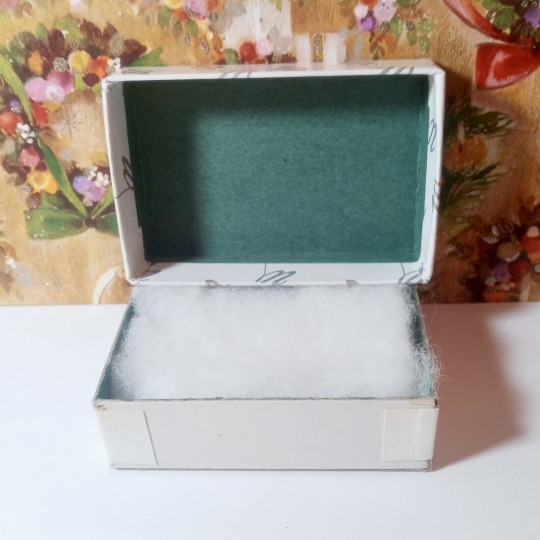
Here is a jewelry box from Wieboldt’s Department Store in Chicago.
1 note
·
View note
Photo
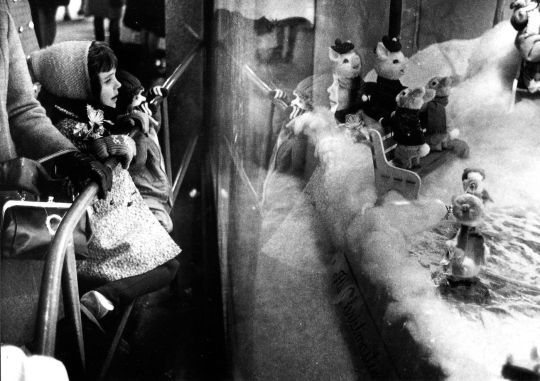

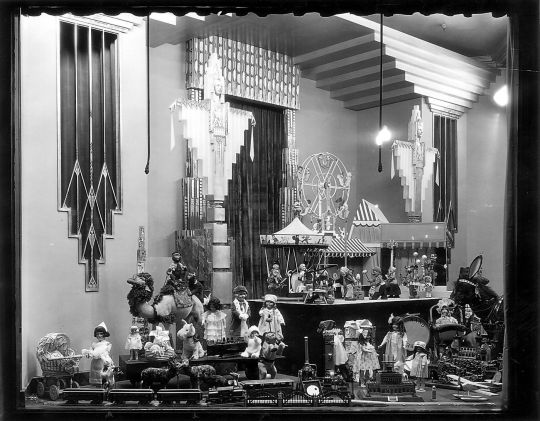
Christmas in Chicago
1 note
·
View note
Photo
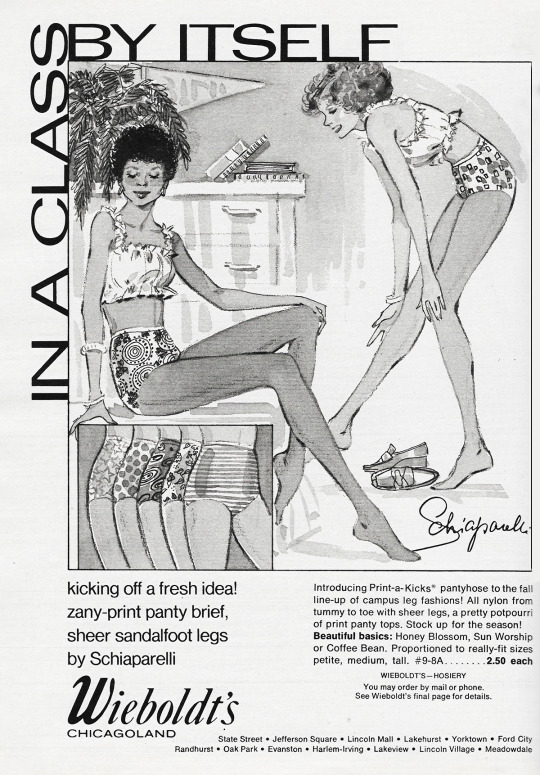
August 1975. 'Introducing Print-a-Kicks pantyhose to the fall line-up of campus leg fashions!'
60 notes
·
View notes
Text
me looking at my schedule for next year and being so unexcited about class in wieboldt every day at 9 am but also so excited about my classes generally... smh
2 notes
·
View notes
Text
East Norwich man thanks LIRR riders, emergency workers who saved his life
An East Norwich man choked back tears Thursday as he thanked the LIRR riders and emergency workers who saved his life. Brad Wieboldt, of East ...
from Google Alert - Back Doctor https://ift.tt/2CJB8aa
0 notes
Text
Sears' fate is on the line in Monday's bankruptcy auction. Here's what you need to know
In its 126-year history, Sears grew to become the country's biggest retailer and outlasted Chicago competitors like Carson Pirie Scott, Montgomery Ward and Wieboldt's. Its future now hinges on a bankruptcy auction scheduled to start Monday. Edward Lampert, chairman and…
Sears' fate is on the line in Monday's bankruptcy auction. Here's what you need to know
0 notes